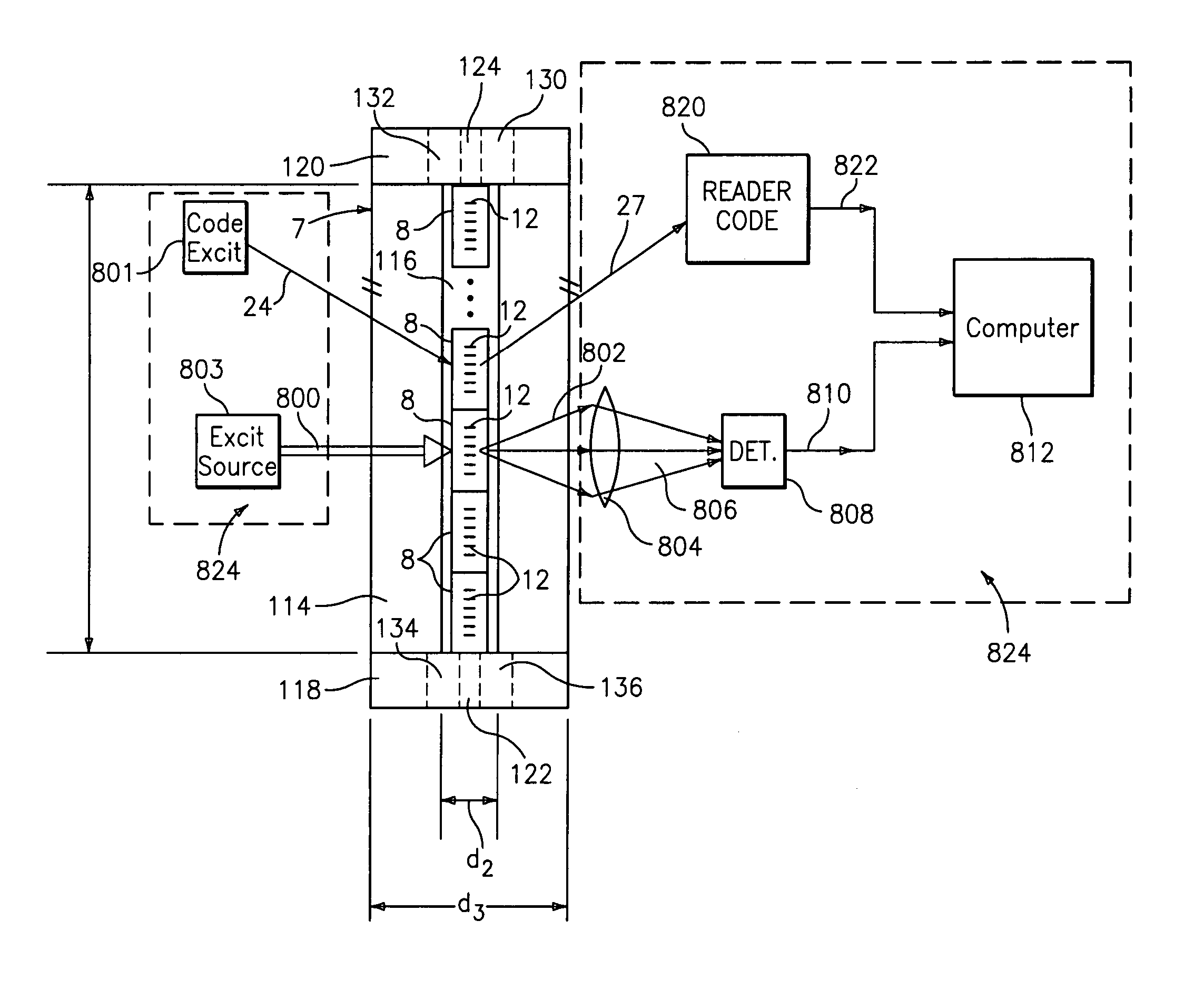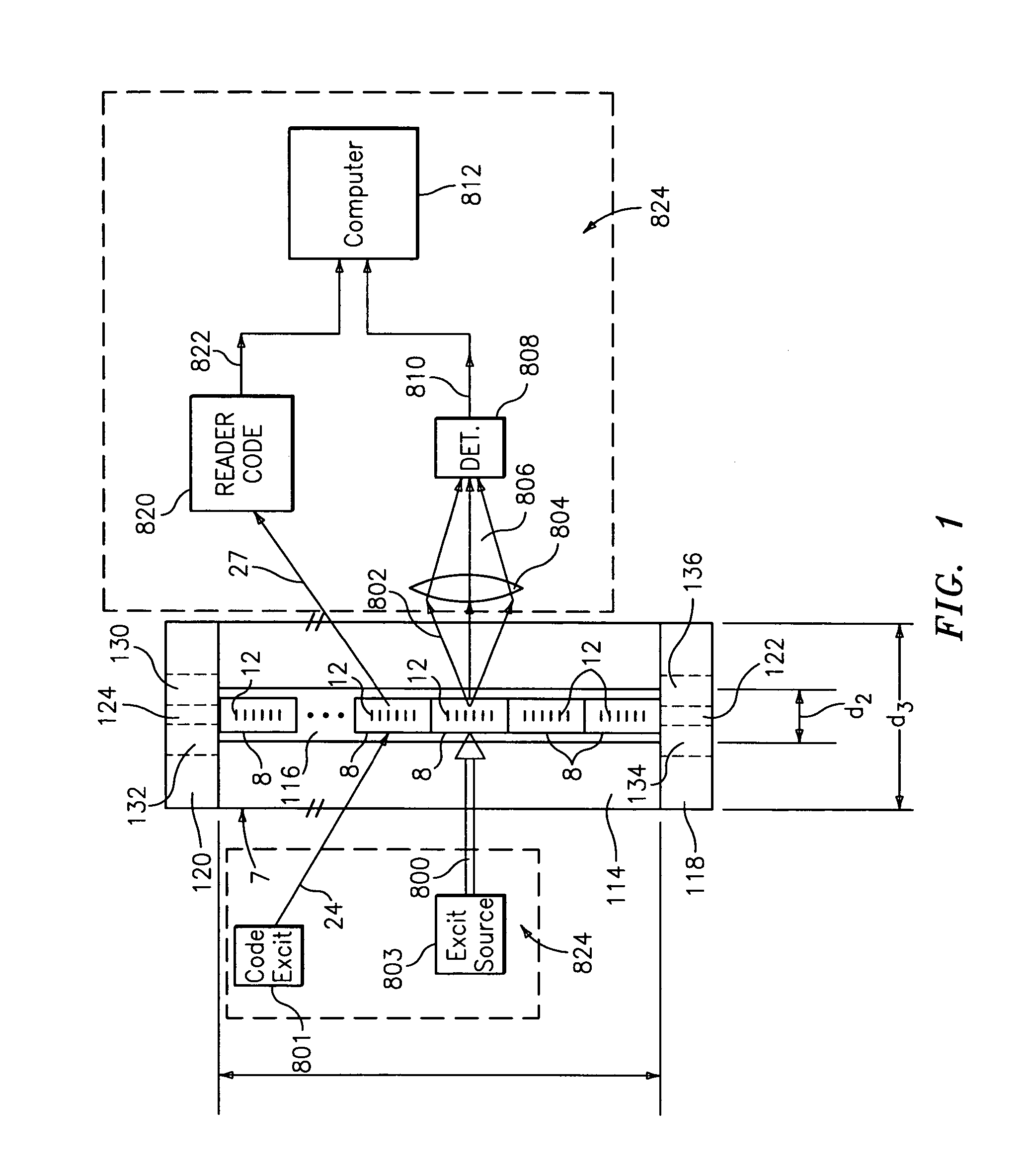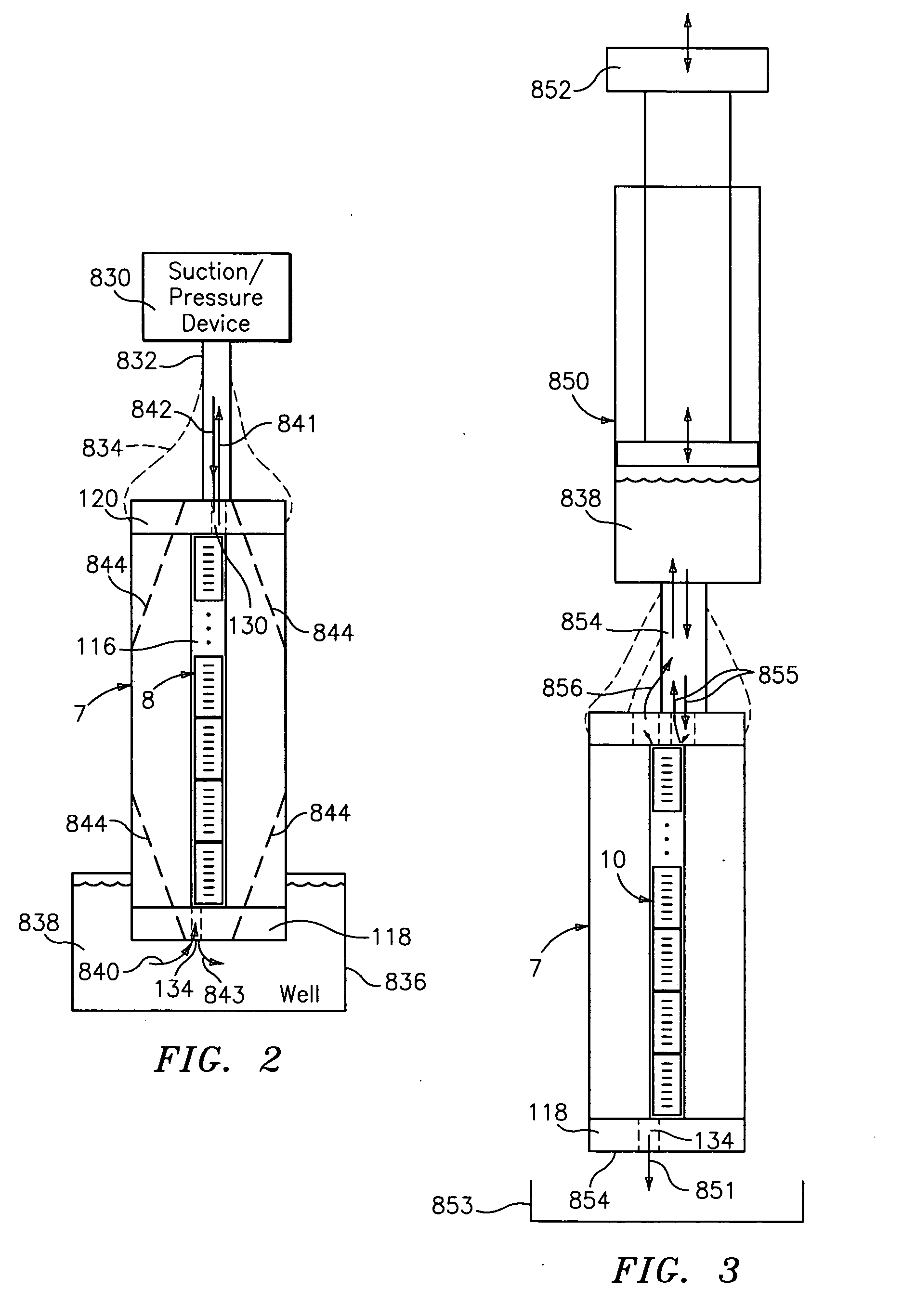Diffraction grating-based encoded microparticle assay stick
a microparticle and encoded technology, applied in the field of complex chemical assays, can solve the problems of complex instrumentation, processing and readout of microarrays for protein expression, microarrays are easily subject to contamination, and require extreme care and highly skilled technicians, so as to preserve the amount of target analyte (or reagent) used and/or convenient use
- Summary
- Abstract
- Description
- Claims
- Application Information
AI Technical Summary
Benefits of technology
Problems solved by technology
Method used
Image
Examples
Embodiment Construction
[0076] Referring to FIG. 1, a diffraction grating-based encoded microparticle (or microbead) assay stick 7 includes a transparent reaction vessel or tube 14 having at least one longitudinal hole or cavity 116 along its length and having one or more microbeads 8 disposed therein. Each of the microbeads 8 have a uniquely identifiable digital code based on a multi-pitched diffraction grating 12 disposed therein, similar to the optical identification elements described in Copending U.S. patent application, Ser. No. 661,234, filed 12 Sep. 2003 (CV-038A), which is incorporated by reference herein in its entirety.
[0077] The tube 114 has an inner diameter d2, which is slightly larger, e.g., about 0.5-50 microns, than the outer diameter of the beads 8. Other diameters d2 may be used if desired, depending on the amount of solution volume desired for the assay. The cavity 116 has a length L that is substantially as long as the number of microbeads 8 in the tube 114 times the length of each be...
PUM
 Login to View More
Login to View More Abstract
Description
Claims
Application Information
 Login to View More
Login to View More - R&D
- Intellectual Property
- Life Sciences
- Materials
- Tech Scout
- Unparalleled Data Quality
- Higher Quality Content
- 60% Fewer Hallucinations
Browse by: Latest US Patents, China's latest patents, Technical Efficacy Thesaurus, Application Domain, Technology Topic, Popular Technical Reports.
© 2025 PatSnap. All rights reserved.Legal|Privacy policy|Modern Slavery Act Transparency Statement|Sitemap|About US| Contact US: help@patsnap.com



